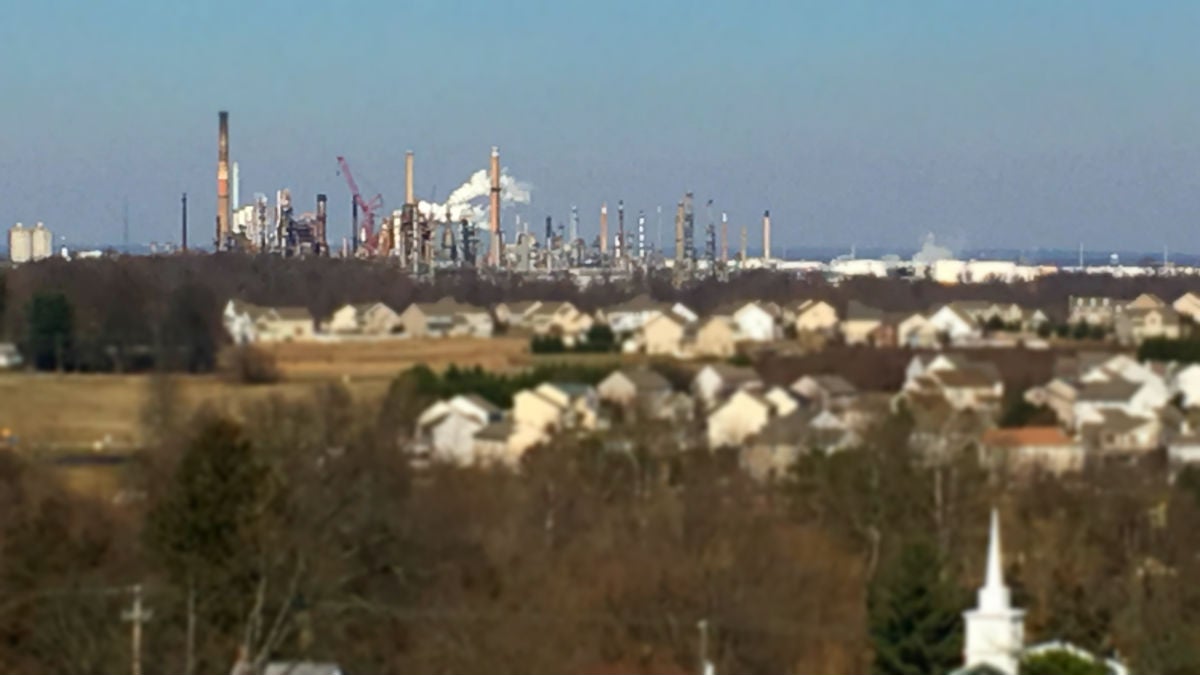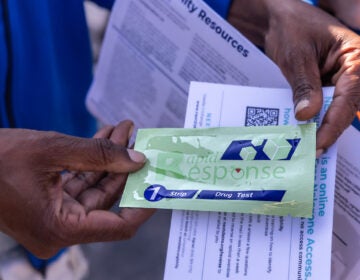Delaware’s toxic release report card [video]

(Mark Eichmann/WHYY)
For years, Delaware was known as the Chemical Capital of America, and while the number of chemical firms in the state has declined in favor of credit card companies and banks, the state still has a high number of chemical producers for its small size. Here’s a look at what those companies are releasing into Delaware’s environment.
It started more than 200 years ago with the granddaddy of all chemical companies in Delaware, DuPont, which brought the world the “wonderful world of Chemistry.”
But the production of those “wonderful” chemicals of course almost always results in undesirable byproducts, sometimes toxic emissions into air, water and ground. Since 1987, the state has published a complete report on those emissions called the Toxics Release Inventory.
“The Toxics Release Inventory falls under the emergency planning and community right to know act, and it was really done to allow the public to understand what is in their community,” said DNREC’s Marjorie Crofts. As director of the Delaware Division of Waste and Hazardous Substances, Crofts keeps track of releases from facilities throughout Delaware.
In 2015, releases to the air in Delaware dropped by 12 percent, but releases to water were up 32 percent and releases to land were up 62 percent.
By far the biggest source of releases is the Delaware City Refinery next to the Delaware River. The refinery was responsible for 73 percent of all releases in the state. And while the refinery reduced its air emissions of sulfuric acid by 73,000 pounds in 2015, it increased emissions of nitrate compound to the Delaware River by 622,000 pounds.
“Getting it to a nitrate based is much better than sending ammonia into the river,” Crofts said. “In that they’ve had increases, they’re decreasing their ammonia, which is a good thing in a big water body like they put it in, into the Delaware River the amount of nitrates again gets diluted.”
Ninety percent of the releases to water in the state go into the Delaware River, with those nitrate compounds making up the bulk at more than 3.7 million pounds.
The 2015 report also shows a decrease in air releases for the state overall, mainly from the shutdown of Chemours Edgemoor facility also on the Delaware River. The decrease is better for health and the environment, but not for the 200 hundred workers who used to work there.
“You got to balance that with the economy, and if you really see this go to zero, it’s because we’ve lost the jobs in those areas,” Crofts said. “There is a certain amount of pollution that is going to be generated with any manufacturing company and it really comes down to how much can our air and water tolerate before it starts having negative impact on public health.”
And while there have been improvements, Delaware still ranks sixth in the nation for most pounds released per-square-mile.
“Delaware has a higher concentration of those then a much larger state with a much larger open area than we do, but that said, we’ve also been able to reduce a lot of those and work with a lot of the companies to make that happen.
You can find the complete Toxics Release Inventory report online at DNREC.delaware.gov. You can search by facility or by chemical to see what is being released in your area.
WHYY is your source for fact-based, in-depth journalism and information. As a nonprofit organization, we rely on financial support from readers like you. Please give today.





